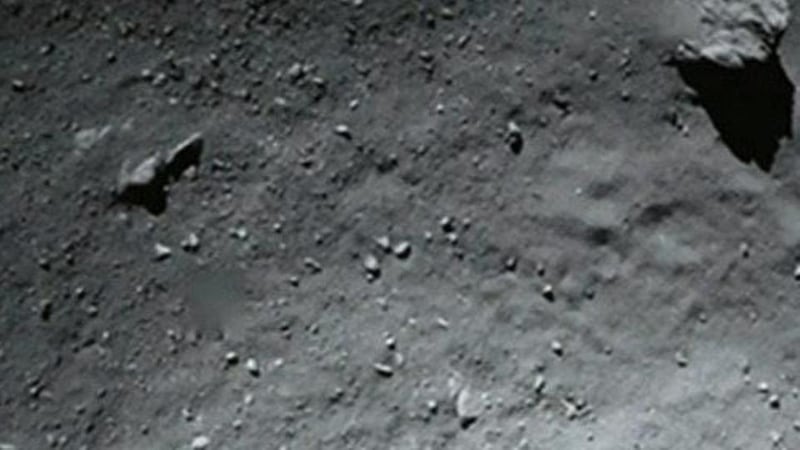A pioneering robotic spacecraft shut down today after radioing results of its first and probably last batch of scientific experiments from the surface of a comet.
Mission controllers put the European Space Agency (ESA) lander to sleep after power in its batteries dwindled to dangerous levels, but not before the craft transmitted a flood of science data to Earth.
Carried aboard the orbiting Rosetta mothership, Philae floated to the surface of comet 67P/Churyumov-Gerasimenko on Thursday, but failed to deploy anchoring harpoons.

Upon contacting the comet‘s unexpectedly hard surface, it bounced back up into space twice then came to rest at a still-unknown location about 1 km from its original target.
Photos and other data relayed by Philae show it finally landed against a cliff or crater wall where there was little sunlight to recharge its batteries. Racing against the clock, scientists activated a series of automated experiments, the first to be conducted from the surface of a comet.
Before dying, Philae defied the odds and radioed its science results back to Earth for analysis.
Its last task was to reposition itself so that as the comet soars towards the sun, Philae‘s batteries may recharge enough for a follow-on mission.
"Perhaps when we are nearer to the sun we might have enough solar illumination to wake up the lander and re-establish communication," spacecraft operations manager Stephan Ulamec said in a statement.
Scientists are particularly interested in learning about the chemical composition of any organic molecules in samples drilled out from the comet‘s body.
Comets are believed to be pristine remnants from the formation of our solar system some 4.6 billion years ago. They contain rock and ice that have preserved ancient organic molecules like a time capsule and may provide insight into how the planets and life evolved.
Philae‘s drill descended more than 25 cm yesterday, penetrating the comet‘s surface.
Rosetta in August became the first spacecraft to put itself into orbit around a comet. It will accompany the comet as it travels towards the sun for at least another 13 months.










